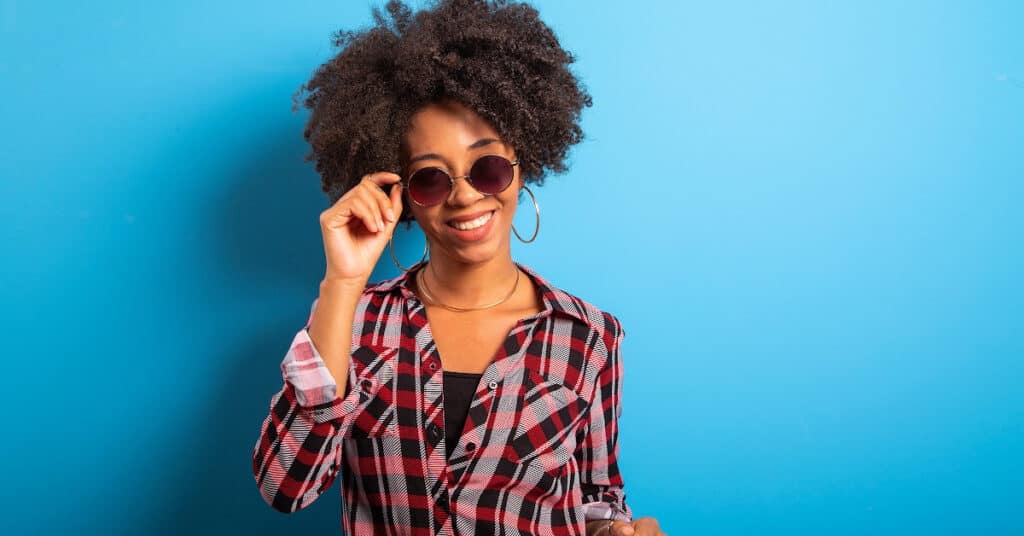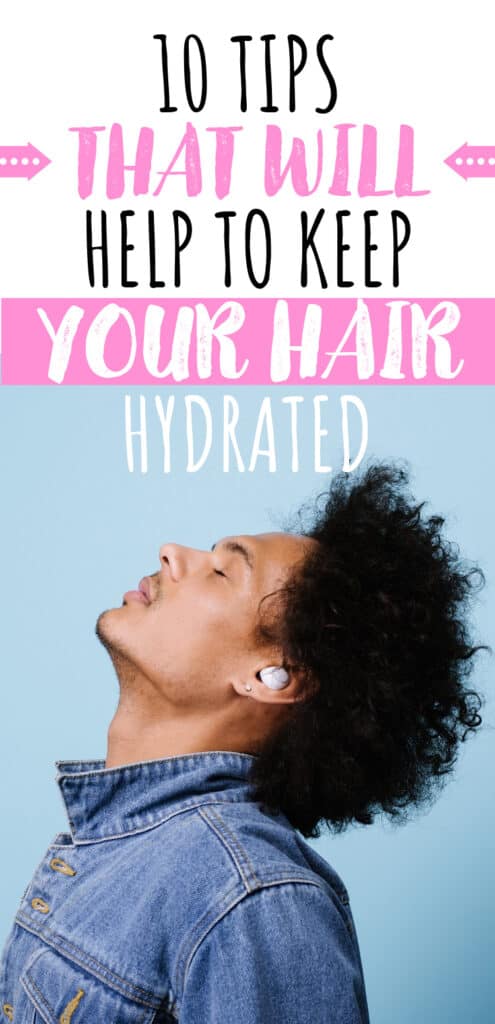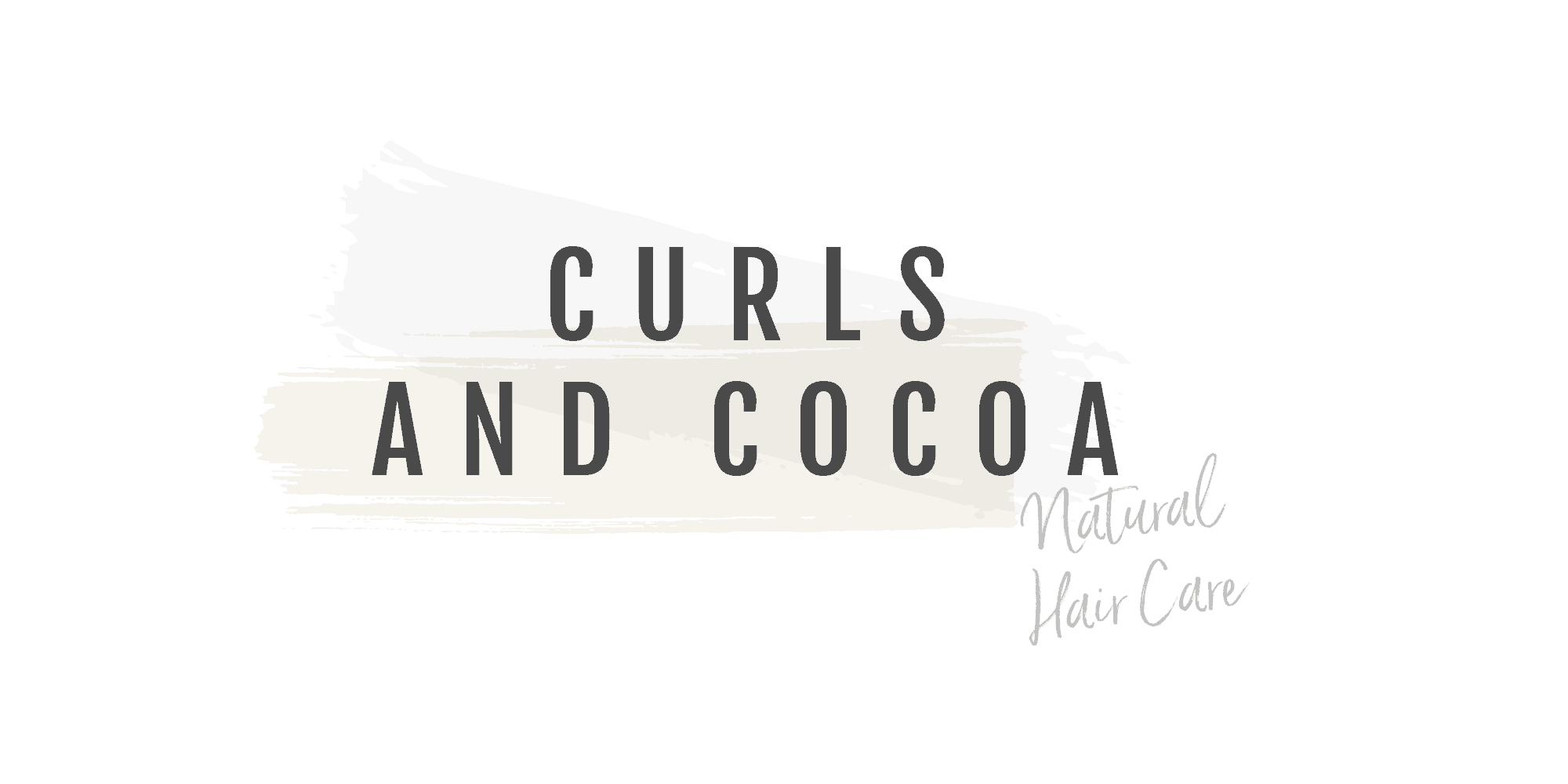If there is one thing that you need to know about hair, it is the fact that your hair needs to remain hydrated.
Some people don’t really understand the importance of keeping hair hydrated and because of that end up with a lot of unnecessary problems.
When it comes to natural hair the top priority is that you must learn how to keep your hair hydrated.
Hydration can come in many different forms and sometimes you need to find the best way to make sure that your hair stays hydrated.
Today we are going to look at 10 different ways that you can keep your hair hydrated.
***Please note that this site uses affiliate links if you would like to read the legal stuff you can find it here

Why Your Hair Needs Hydration
Think about your body for a second. If you don’t drink enough water, what begins to happen? Your skin gets dry, your mouth gets dry, and you become dehydrated.
It’s basically the same thing that happens to your hair.
If it is left without having been properly moisturised it begins to get dull, dry and brittle.
Eventually, your hair will begin to suffer and break.
Keeping your hair hydrated is one of the key things that your hair must have above everything else if you want it to remain healthy and grow.
Natural hair doesn’t have a lot of secrets to it but hydration is right up there as top dog.
If you don’t learn how to keep hair hydrated then you can forget everything else, none of it matters!
10 Ways To Keep Your Hair Hydrated
Let’s take a look at some of the different things we can do if we want to learn how to keep hair hydrated.
1. Deep Condition
Deep conditioning is a very important thing that should be included in everyone’s natural hair regimen.
When you deep condition your hair you are making sure that your hair is moistured right to the core of the hair strand.
Deep conditioning will moisturise your hair in a way that no other conditioner can, which is why it is so important that it is part of your natural hair journey.
If you don’t really know where to start I would suggest you get a deep conditioner like this one and begin to use it every 2 weeks as you wash your hair.
If you find that this doesn’t work for your hair you can adjust the frequency to suit your hair over time.
2. Try A Hot Oil Treatment
Hot oil treatments are something that not everyone does and that’s fine if it doesn’t suit you.
If you are going to do a hot oil treatment it’s important to know which oils to use. Some oils are sealing oils and some are moisturising oils.
In this case, we want to make sure that we are using moisturising oils to make sure that we get the full effect to hydrate our hair.
There are 2 ways to do this. You can get shop bought hot oil treatment or you can mix your own oils together, especially if you already know which oils your hair likes.
If you don’t really know which oils to choose then I can suggest you start with oils like coconut oil, olive oilor avocado oil.
To learn how to correctly use these oils in your hair you can take a look at this article on hot oil treatments.
3. Use A Satin Pillowcase
Choosing to use a satin pillowcase is one of the easier things you can do to help keep your hair moisturised. It doesn’t take a lot of work at all. It’s a simple switch from a regular cotton one to a satin one.
It will make all the difference to your hair.
Cotton pillowcases tend to pull moisture away from your hair by soaking it into the pillowcase.
You may have noticed the “grease” stains on the pillowcase when you wake up in the morning which is essential all the moisture from your hair.
The good thing about satin is that it does not take moisture away from your hair.
You can use a satin pillowcase or a satin bonnet like this one.
4. Leave-In Conditioner
You have to have a leave-in conditioner in addition to all the other hair products that you already have.
Using a leave-in conditioner is a great way to make sure that between hair washes your hair is still getting enough hydration.
You can choose to use a leave in conditioner every few days. It really depends a lot on the needs of your hair.
You may have to do a little trial and error when it comes to getting it right with your leave in.
5. LOC Method
Following the rules of the LOC method is a really good place to start. LOC stands for Liquid, Oil, Cream.
You follow the rules by starting with some type of liquid in your hair, followed by an oil and then a cream.
Some people find that their hair works best with the LCO method, which is liquid, cream and then oil.
Either one can suit your hair but just make sure that liquid is always first.
The LOC method basically works to make sure that as you moisturise your hair you are able to seal that moisture in.
You can read more about the LOC method here and how to correctly do it.
6. Greenhouse Effect
The greenhouse effect is a really great way to make sure that your hair receives maximum hydration without having to do too much work.
The greenhouse effect works by trapping moisture into your hair. It can be done with a simple shower cap, some oils and damp hair.
You can do the treatment overnight or during the daytime, whichever suits you best.
To read more on the greenhouse effect you can click this link.
7. Let It Drip Dry
Allowing your hair to air dry is a good method especially if you are still learning how to keep hair hydrated.
When your hair drip dries only excess water will leave your hair the rest of it will take its time to soak up and dry naturally.
Obviously leaving your hair to drip dry doesn’t suit everyone especially if you have places to go but it’s a really good way to make sure your hair stays hydrated.
When you blow-dry your hair you are forcing the water out of your hair in a very short about of time and not allowing it to soak up what it needs.
8. The Baggy Method
The baggy method is very similar to the greenhouse effect. In fact, some people often get the 2 methods slightly confused because they are so similar.
The baggy method requires you to start on clean hair using a moisturiser and a shower cap.
Learn more about the baggy method here.
9. Water Only Washing
A lot of people actually underestimate the power of water only washing but there are a lot of benefits in doing so.
First of all, you are not stripping away any nutrients/ oils from your hair, you are only getting rid of everyday dirt.
Also by water only washing you leave your hair’s natural sebum intact.
The natural oils that your hair produces actually help to protect your hair which is why sometimes after having washed your hair with shampoo your hair can feel very dry until your scalp begins to produce more natural sebum again.
This is why getting the balance of when to wash your hair is so important.
10. Trim Your Ends
Trimming your ends may seem like an odd one but it really is not. Let me explain.
When you fail to trim your hair it leads to split ends and breakage.
When you get split ends, it makes it very easy for your hair to lose moisture. Remember that the ends of your hair are the oldest and therefore the weakest part of your hair.
If you don’t look after them, split ends are bound to occur.
Once you get into a routine of trimming your hair when needed your hair will be healthy and you won’t have too much of a problem keeping your hair hydrated.
Final Thoughts On How To Keep Your Hair Hydrated
As mentioned earlier learning how to keep your hair hydrated is extremely important. If you learn nothing else about natural hair, learn this.
The 10 tips that I have given above are all things that I have used myself so they are definitely tried and tested.
Which is your favourite and what would you add to the list? Let me know in the comment section below!
Related posts:
10 Best deep conditioners
How to moisturise and seal low porosity hair




